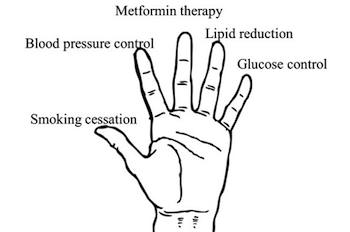As we age, new terms begin to creep
into our vocabulary. My exposure to hospice care came into being
when my first wife had cancer with little hope of winning the battle.
Almost 12 years ago on March 23, 2002, she lost the battle. If it
had not been for the caring folks of our local hospice group, I
honestly don't know what I would have done. As people with diabetes,
we never know when we may need hospice care or palliative care.
Palliative care was not a term I was
familiar with until about ten years later. At the time, I was not
sure I liked what I saw being done to a friend with Alzheimer's
disease. Since I was not sure that there were other illnesses
involved, I was concerned that he was being ignored and a form of
euthanasia was being employed. One day I asked the nurse why he was
being treated the way he was and I was told he was being given
palliative care. I won't go into the expletives that went through my
mind about his care, but I was going to do some research.
Hospice care and palliative care can go
hand-in-hand, and often do, but it is important to understand the
meaning and definition of each. Hospice Care is palliative by its
very nature. My friend was receiving neither, but was on an
experimental treatment, which his family was not aware of and once
they were made aware of this, transferred him out of the care
facility to another facility.
When most people think of hospice care,
they are thinking about end of life care and this would be correct.
One point is important - With Hospice Care, Medicare requires that a
physician certify that a patient’s condition is terminal. The
physician must certify that a patient’s life expectancy is six
months or less. Both Palliative and Hospice Care can be delivered at
any location. Hospice is normally considered for people near the end
of life. Just because they are on hospice does not mean that once
the six months of hospice has passed, they are removed from hospice.
Many people have been on hospice more than once and many have been on
hospice longer than six months.
The focus of hospice relies on the
belief that each of us has the right to die pain-free and with
dignity, and that our loved ones will receive the necessary support
to allow us to do so. Hospice is a philosophy, not a specific place.
- Hospice focuses on caring, not curing and, in most cases; care is provided in the person's home.
- Hospice care also is provided in freestanding hospice centers, hospitals, and nursing homes and other long-term care facilities.
- Hospice services are available to patients of any age, religion, race, or illness.
- Hospice care is covered under Medicare, Medicaid, most private insurance plans, HMOs, and other managed care organizations.
- Hospice Care services are more inclusive than Palliative Care services. Hospice Care includes physician services, nursing services, social worker, spiritual care, bereavement care and volunteers.
For a blog on three hospice myths, read
this blog.
Palliative care treatments are not
limited with palliative care and can range from conservative to
aggressive and curative. This can be used at any stage of the
illness and need not wait until the advanced stages.
Palliative care focuses on relieving
the symptoms that are related to chronic illnesses.
This care is generally provided by a
team of specialists, which may include physicians, nonphysician
clinicians, social workers, chaplains, pharmacists, and
nutritionists. The palliative care team works in conjunction with
the primary physician. The team can offer assistance with treatment
of pain and other symptoms, assistance with communication of bad news
regarding diagnosis and prognosis, support for patients and families
in medical decision-making and in navigating the complex medical
system, and emotional and spiritual support.
Palliative care in the United States is
relatively new starting in 1996 where hospice care started in when
the philosophy and principles were introduced in the 1970s. The
concept gained acceptance and Medicare began covering its costs in
1982. The first board examination for palliative care under the
American Board of Medical Subspecialties (ABMS) was offered in 2008.
